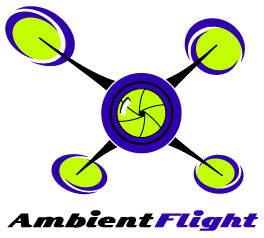

Many mid to large aerial photography drones (I’m using the word drone begrudgingly, but because it is recognizable by the general public) rely on mid size mirror-less cameras because they are light and able to produce quality competitive with full size DSLR cameras.
My platform utilizes the Sony NEX series mirrorless cameras, specifically a NEX-5T. I’ve been happy with the quality of the NEX especially based on its size. Many NEX cameras come with a 16-50mm f/3.5 kit zoom lens, which works fairly well for aerial photography and video with very little lens distortion.
Because the 16-50mm is a zoom lens, many AP (aerial photography) enthusiasts and professionals opt to purchase a prime lens like the 16mm Sony “pancake” lens or the Sigma 19mm f/2.8. Today I’m discussing and comparing the Sony 16-50mm f/3.5 with the Sigma f/2.8, which I just acquired. There are likely many reviews which compare these two lenses with regards to general photography, but likely zero to none which approach comparing these two lenses for aerial photography and video.

Weight and size difference between the Sony 16-50mm and Sigma 16mm prime. Note that the Sony lens is retracted in this image.
Sony 16-50mm f/3.5 E-Mount Lens
The Sony 16-50mm f/3.5 lens is a good general purpose lens, capable of a nice wide angle or landscape shot. Because it is a zoom lens, some quality is sacrificed due to the extra glass and construction of the lens. At 16mm the screen width is great for aerial photography and video, but that width could mean parts of the aircraft carrying the camera may be in the frame if the unit is mounted toward the center. Depending on flying style and wind conditions, the props and two front arms of my hexacopter are occasionally visible in the frame, requiring editing or cropping of the image.
For what it delivers, the Sony 16-50mm lens is light, which is important for aerial imagery. Each gram added can reduce flying time and decrease the performance of the aircraft.
I often found it necessary to use a sharpening filter to improve aerial images captured with this lens. The photo above is an example of one which I did process a bit to increase the clarity.
Sigma 19mm f/2.8 Prime Lens
A “prime” lens is one which has a fixed focal length. Prime lenses are typically higher quality as the glass and construction is designed for that single focal length, and does not have to compromise its construction to cover a focal range. The Sigma 19mm f/2.8 does seem to produce a clearer image than the Sony 16mm. Having one more f-stop (to f/2.8 instead of 3.5) means the lens is faster and can let in more light. I’ve found the extra lens speed to be quite useful in aerial imagery. The shutter speed can be quicker which helps to fight blur caused by motion or vibration of the hexacopter carrying it.
When dumping images shot with the 19mm Sigma, often I find it unnecessary to sharpen the image. If I do apply some sharpening it is generally in smaller amounts than with the 16-50. Because this lens is not quite as wide, the arms and propellers of the helicopter appear in the frame less often. The disadvantage to the narrower lens is that the captured image is not as wide, resulting in perhaps some less “dramatic” landscapes.
This lens is considerably heavier, meaning balancing the camera on a gimbal is a little more difficult. Leveling techniques and setup for one lens will not work with the other, so switching back and forth between the two lenses could be time consuming.
Quick Comparison
The following chart shows my rankings between the two lenses.
| Sony 16-50mm Kit Lens | Sigma 19mm Prime Lens | |
|---|---|---|
| Clarity | X | |
| Size | X | |
| Weight | X | |
| Lens Hood Included | X | |
| Low Light | X | |
| Wide Angle Coverage | X | |
| Versatility | X | |
| Depth of Field | X | |
| Better Wide Angle Lens Distortion | X |
Despite what I was hoping the Sigma is not the E-Mount lens to end all lenses, but it is the highest quality wide I’ve used to date. It will be my gamer for most of my aerial photos and video and with an online coupon I snagged one for $174.00. If I need a tiny bit more width for a more dramatic landscape shot, I’ll switch to the 16-50. I’ve ready many reviews stating the Sony 16mm Pancake is not as good as the Sigma 19mm, so I doubt I’ll pick that lens up unless I’m able to test one first.
I would love to get my Nikon D7000 DSLR in the air and put my Nikon 10-24mm super wide on it. Those shots would be amazing. The current gimbal setup I have now will not work with that platform, so it would require a whole new gimbal.